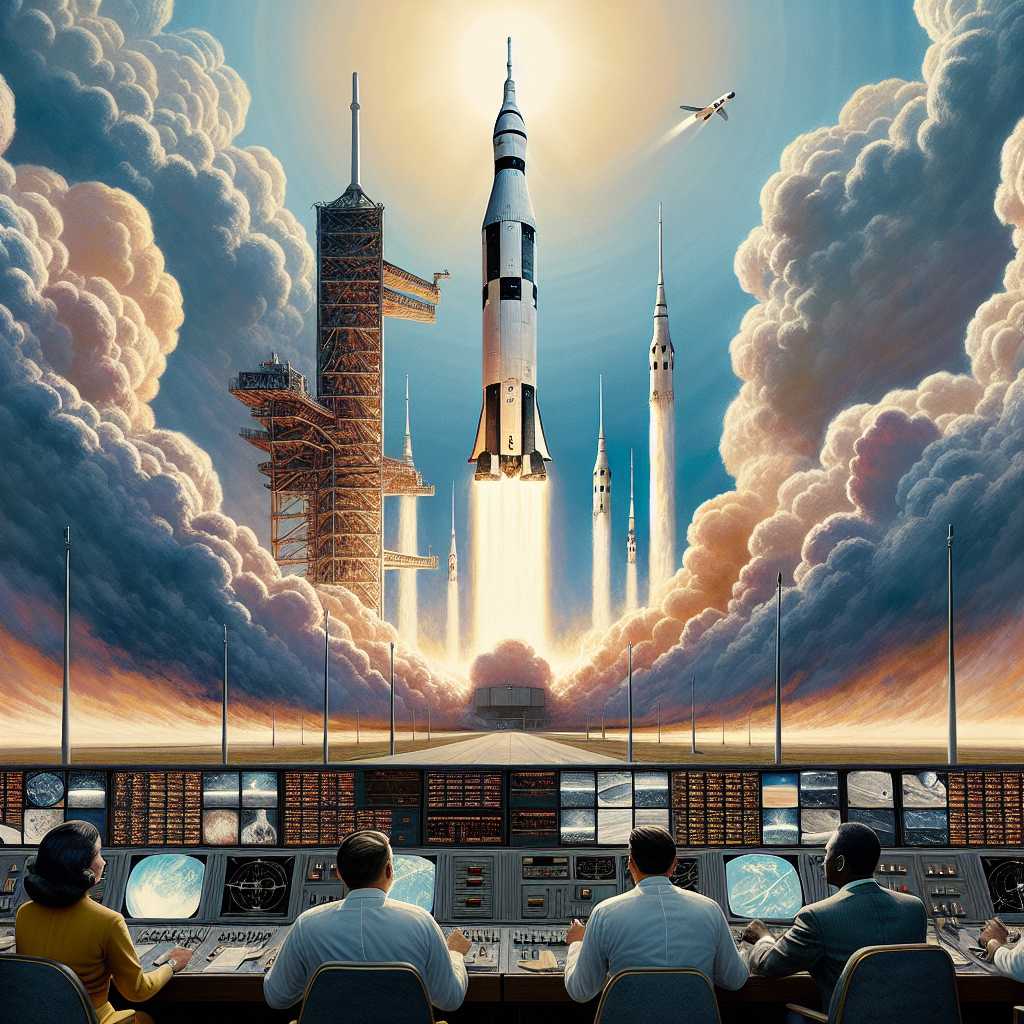Understanding the Legacy of Apollo: An In-Depth Exploration of NASA’s Pioneering Space Program
The Genesis of Apollo: America’s Dream to Conquer Space
The space race, marked by fierce competition between the United States and the Soviet Union during the Cold War era, gave rise to America’s ambitious Apollo program. The program originally emerged from a landscape buzzed with technological innovation and political urgency. On May 25, 1961, President John F. Kennedy invigorated a nation by pledging that America would send a man to the moon and return him safely to Earth before the decade was out. This audacious commitment was not merely scientific curiosity but also a geopolitical statement of superiority.
This grand vision took shape through the National Aeronautics and Space Administration (NASA). The Agency dedicated substantial resources — both human and material — to achieving what many thought impossible. Apollo represented ingenuity and courage; employing thousands of engineers, scientists, and astronauts who would push beyond the terrestrial confines.
Technological Marvels: The Apollo Spacecrafts and Saturn Rockets
The hardware at the heart of Apollo consisted of two spacecraft types: the Command/Service Module (CSM) and the Lunar Module (LM). The CSM acted as the central control hub and living quarters for the astronauts into lunar orbit and back home, whereas the LM was specially designed for landing on the moon’s surface. Both were marvels of science and engineering created to operate beyond Earth’s atmosphere in harsh space environments.
The success significantly relied on the power of rockets as well. The Saturn family, designed by Wernher von Braun and his team, were the most powerful rockets ever built at that time. The crowning glory was the Saturn V, a multi-stage launch vehicle capable of pushing past Earth’s gravitational pull, vital in sending the Apollo missions towards their lunar destinations.
Triumphs and Tragedies: Key Moments in the Apollo Journey
The Apollo program experienced breathtaking successes along with profound tragedies. Apollo 11 stands out as an icon of human achievement when astronauts Neil Armstrong and Buzz Aldrin walked on the Moon on July 20, 1969 — a moment proudly watched by millions around the globe.
Tragically, not all endeavors were crowned with success—the Apollo 1 mission ended in disaster during a pre-launch test when a cabin fire claimed the lives of all three crew members. This tragedy led to major design and safety revisions in the spacecraft but demonstrated the grave risks involved in space exploration.
Additionally, other prominent missions included Apollo 8’s historic first manned orbit around the moon, exemplifying ultimate courage as humans ventured where no one had before, and Apollo 13’s “successful failure,” which tested human endurance and ingenuity during a mid-mission crisis.
Apollo’s Scientific Contributions: Unveiling Lunar Mysteries
Beyond planting flags or footprints, Apollo sought to answer fundamental questions about our closest celestial neighbor. The sampling of lunar soil and rocks unearthed clues about the Moon’s formation, geological activities, and potential resources. The deployed scientific instruments allowed continuous
Cultural Impact: How Apollo Spurred Imagination Worldwide
Apollo did more than expand technological borders; it influenced global culture extensively. Inspiring films, books, and art reflected humanity’s fascination to reach out beyond their planet’s enclosure. Furthermore, it challenged educational programs emphasizing STEM areas to produce future capable guardians for new epic sagas. The effect rippled across generations cultivating optimism for technological frontiers.
Notes
– In total, there were 17 Apollo missions including unmanned missions.
Image description: A phenomenal view showing a Saturn V rocket mid-launch against bright sky and smoke trails for an Apollo mission. In front is visible mission control anxiously tracking its progress among banks of computers — an emblematic representation of humankind reaching beyond what once seemed imaginable.
